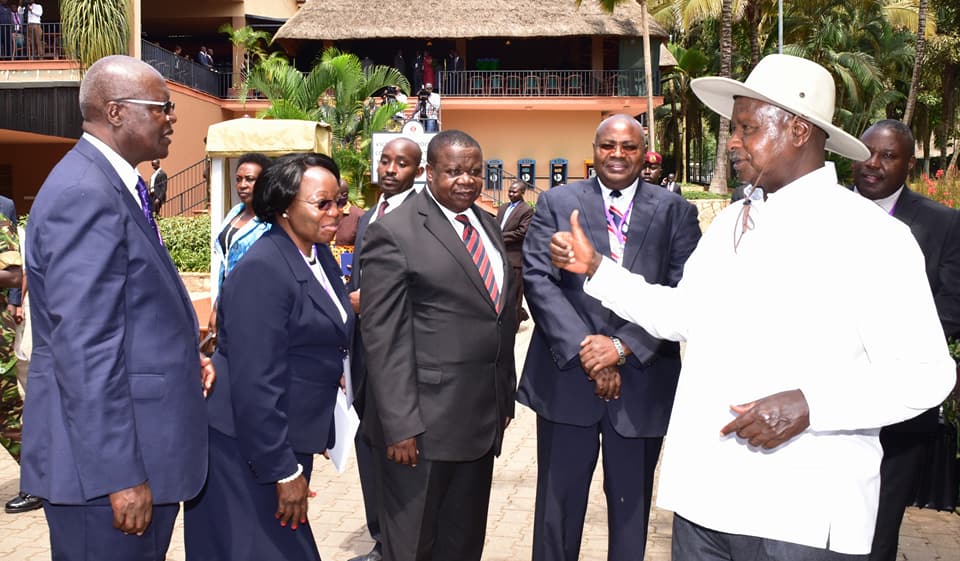In the heart of the impenetrable Bwindi Forest, where the mystical mist dances through the treetops, I found myself face to face with a massive silverback named Bahati.
“Do not run should a gorilla charge at you,” the warden’s words echoed in my mind, but when Bahati charged without warning, self-preservation overtook logic.
As everyone scattered in panic, I froze turning just in time to witness his lightning-fast lunge. This hair-raising encounter with one of the critically endangered mountain gorillas became the crowning moment of my unforgettable journey through what Winston Churchill aptly named “The Pearl of Africa”.
Uganda, with its lush landscapes and diverse wildlife, stands as the primate capital of the world. As 2023 put paid to, I joined fellow explorers for a signature experience tracking the great apes. The anticipation was palpable as our journey began with a Bombardier CRJ900 jet touching down in Entebbe after a short flight from Nairobi.
The mountain gorillas, a species critically endangered with only around 1,063 individuals left in the wild, are a treasure hosted by Uganda. The majority reside in Bwindi, with the remaining population scattered between Mgahinga Gorilla National Park, Congo’s Virunga National Park, and Rwanda’s Volcanoes National Park.
The 23 gorilla families in Uganda form the largest number of habituated gorillas globally, making it a sought-after destination for wildlife enthusiasts. Securing a permit, priced at Sh10,500 for East Africans and $700 for foreigners, is a prerequisite for this once-in-a-lifetime experience.
Our destination was the Bwindi Impenetrable Forest, divided into four sectors, each catering to different gorilla families. Buhoma, located at a lower altitude of 1,160 meters, is popular due to its relatively easier tracking conditions. Ruhija, perched at the highest altitude of 2,607 metres, offers a secluded challenge, while Rushaga provides an immersive gorilla habituation experience. Our chosen sector, Nkuringo, south of Bwindi on the Ndego ridge, promised the most scenic experience, with four families inhabiting the region.
Assigned to track the Bushaho family, led by the dominant silverback Bahati, our adventure began with an orientation. Trained armed rangers assured us of safety in case of encounters with other wildlife like elephants. The trek commenced with a spirited jig performed by the Batwa community, custodians of the forest, setting the stage for the challenging journey ahead.
Bwindi’s impenetrable nature demands adequate preparation. Altitude, crawlies, rain, and steep terrain are all part of the challenge. Waterproof hiking boots, quick-dry wear, gaiters, a poncho, long sleeves, trousers, and garden gloves are essential. A first aid kit, a degree of fitness, and a porter to assist during the extended walks are advisable.
Elderly or disabled individuals can opt for a traditional stretcher sedan chair. With binoculars and good cheer, you’re ready to embark on this extraordinary quest.
Our trek led us through misty valleys, where tea plantation bands marked the boundary between human habitat and the wild Bwindi. Conservation fees allowed us to breach this barrier, following a footpath carved by wardens using bill-hooked sickle machetes.
As we navigated the dense vegetation, the jungle came alive with unseen plants and butterflies. The terrain tested our limits, with some adventurers succumbing to its challenges. Undeterred, the remaining group pressed on, guided by trackers indicating our proximity to the gorilla family.
The magical moment arrived as we approached the silhouettes of the gorillas, breaking twigs in the dense thicket. The feeling was akin to witnessing a sunrise over Mt Kenya, driving through a wildebeest herd, or diving into the Indian Ocean’s coral reef. Nature’s grandeur unfolded in hallowed silence as Bahati, the imposing silverback, led us deeper into the thicket. Every move, every glance, held us captive.
As our boldness grew, we edged closer, attempting to capture the perfect picture. However, Bahati expressed his disapproval when we disrupted his dining experience. The gorillas, generally non-aggressive, spend most of their time feeding on a vegetarian diet with insect supplements. Their peaceful demeanour was momentarily disrupted when Bahati charged unexpectedly. In the face of this, self-preservation prevailed, and the trackers reprimanded the silverback.
Relieved that no headlines would be generated, we left the gorilla family to enjoy their privacy. The skies opened, forcing both beasts and humans to seek shelter. In the midst of the rain, Ken, one of the seniors we thought unable to make the trek, re-joined the group just in time to witness the gorillas before they moved on. Noteworthy is that the Bushaho family welcomed a new addition, a testament to the thriving ecosystem.
Seven hours after the trek began, we were handed souvenir certificates by Bwindi’s senior-most warden. Our fellow trackers, assigned to the Posho family, completed their trek after three hours, a testament to nature’s unpredictability.
Returning to bustling Kampala after an eventful week in Western Uganda, a celebratory night out was in order. Yet, more adventure and local delights like kayaking at the source of the River Nile and sampling the Rolex delicacy remain unexplored beckoning a repeat visit.
In conclusion, Uganda’s Bwindi Impenetrable Forest offers not just a glimpse but an intimate encounter with the majestic mountain gorillas. The journey, challenging and rewarding, immerses you in the heart of one of the last remaining habitats of these incredible creatures. As Uganda proudly preserves its primate treasures, every adventurer should aspire to experience the minders in the mist, creating memories that linger as vividly as the lush landscapes of “The Pearl of Africa.”
Useful information
1. The best time for gorilla trekking and wildlife viewing is during the dry seasons – January to February and June to September.
2. Gorilla trekking permits are essential and should be obtained in advance. Each permit allows one person to trek to see the gorillas for one hour.
3. Western Uganda offers a range of accommodations, from luxury lodges to budget-friendly options. It’s recommended to book accommodations in advance, especially during the peak gorilla trekking seasons.
4. Check with your healthcare provider for necessary vaccinations and health precautions before travelling to Uganda.
-Business Daily






